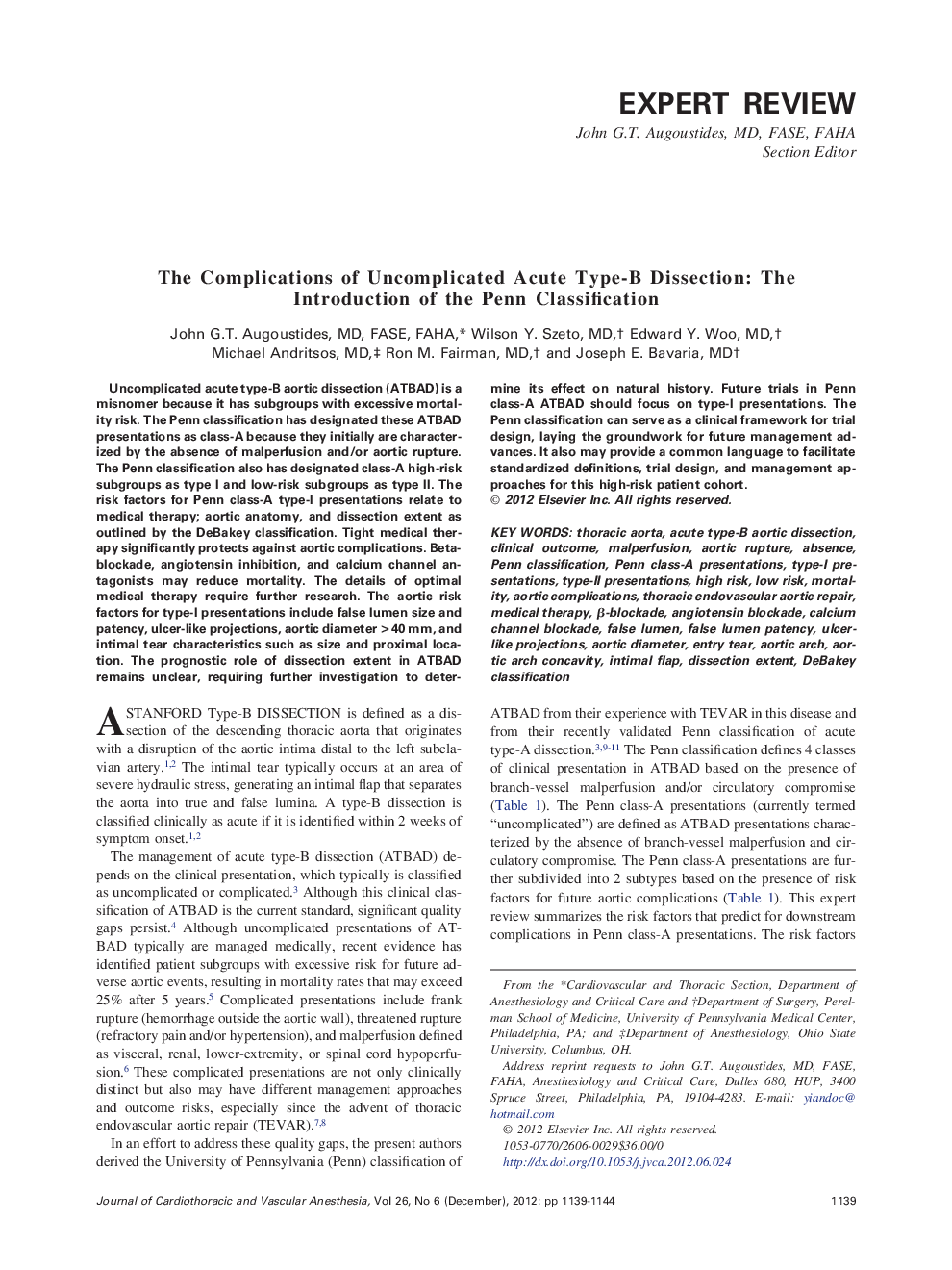| Article ID | Journal | Published Year | Pages | File Type |
|---|---|---|---|---|
| 2759734 | Journal of Cardiothoracic and Vascular Anesthesia | 2012 | 6 Pages |
Uncomplicated acute type-B aortic dissection (ATBAD) is a misnomer because it has subgroups with excessive mortality risk. The Penn classification has designated these ATBAD presentations as class-A because they initially are characterized by the absence of malperfusion and/or aortic rupture. The Penn classification also has designated class-A high-risk subgroups as type I and low-risk subgroups as type II. The risk factors for Penn class-A type-I presentations relate to medical therapy; aortic anatomy, and dissection extent as outlined by the DeBakey classification. Tight medical therapy significantly protects against aortic complications. Beta-blockade, angiotensin inhibition, and calcium channel antagonists may reduce mortality. The details of optimal medical therapy require further research. The aortic risk factors for type-I presentations include false lumen size and patency, ulcer-like projections, aortic diameter >40 mm, and intimal tear characteristics such as size and proximal location. The prognostic role of dissection extent in ATBAD remains unclear, requiring further investigation to determine its effect on natural history. Future trials in Penn class-A ATBAD should focus on type-I presentations. The Penn classification can serve as a clinical framework for trial design, laying the groundwork for future management advances. It also may provide a common language to facilitate standardized definitions, trial design, and management approaches for this high-risk patient cohort.
